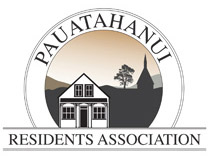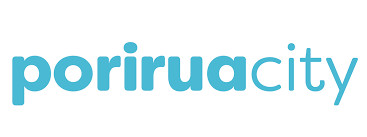Local Authorities
Porirua City Council
Pāuatahanui is within the boundaries of Porirua City. Porirua City Council is responsible for
- Collecting property rates
- Providing services such as road maintenance, rubbish collection, animal control, public amenities e.g. parks, library
- Issuing building consents and resource consents
- Through the zoning system, defining what is rural, rural lifestyle or village settlement land and therefore what activities can be carried out there, e.g. business activities apart from farming
- Working with the Greater Wellington Regional Council to set and monitor the rules for construction, excavation and earth moving, including building access tracks and removing vegetation
Porirua City Council can be contacted by
- Phone 04 237 5089
- Email enquiries@poriruacity.govt.nz
- Antenno
Antenno
 Antenno is an app used by some councils in NZ including Porirua City Council. Once downloaded on a phone it can be used to get updated area information, such as facility closures or rubbish collection information, as well as for reporting incidents such as roading issues, flooding, and fly tipping.
Antenno is an app used by some councils in NZ including Porirua City Council. Once downloaded on a phone it can be used to get updated area information, such as facility closures or rubbish collection information, as well as for reporting incidents such as roading issues, flooding, and fly tipping.
District Plan
For any proposed activity on a rural property it is essential to check what status the activity has under the District or Regional Plans. This will determine whether the activity is permitted, controlled, restricted, discretionary, non-complying, or prohibited.
Porirua City's District Plan provides the policies and rules for Porirua City Council covering activities in the zones under which Pāuatahanui is managed.
On 1 November Porirua City formally adopted the new District Plan 2025 which replaces the earlier 1999 version.
The District Plan can be viewed online using the ePlan which identifies
- Property boundaries
- District Plan zones - General Rural, Rural Lifestyle, Rural Settlement
- Hazards - Flood, Seismic, Contaminated sites
- Ecosites - Significant Natural Areas, Special Amenity Landscapes
- National Grid & Gas Pipe corridors
Entering a property address into the ePlan will identify the matters specific to that property. These will determine what activities can be carried out and what matters the Council has discretion over.
Quick Guide to navigating the District Plan.pdf
Greater Wellington Regional Council
Pāuatahanui is under the jurisdiction of the Greater Wellington Regional Council. The Regional Council is responsible for
- Management of waterways including streams, wetlands
- Issuing consents for activities that affect
- Water - for example, taking water from streams or rivers, discharges to water from stormwater, agrichemicals, sediment
- Air quality - for example, woodburners, agrichemicals, dust or fume generating
- Land use - for example, stock access to waterways, earthworks, vegetation clearance, plantation forestry
- Wetlands & streams - for example, riparian planting, clearing flood debris, building bridges and water crossings such as culverts
The local Land Management Advisor is able to provide information on the management of waterways, wetlands and land use.
Greater Wellington has maps which provide information on
- Property boundaries
- Streams and waterways
Regional Plan
The policies and rules for the Greater Wellington Regional Council area are currently covered by a number of Regional Plans. These will soon be replaced by the Natural Resources Plan
http://www.gw.govt.nz/regional-plans-policies-and-strategies/
http://www.gw.govt.nz/proposed-natural-resources-plan/
Activity Status
Briefly, activities as defined in the Resource Management Act are:
Permitted - a permitted activity does not require a resource consent as long as it complies with the certain conditions and standards
Controlled - a controlled activity requires a resource consent which the Council must grant if the activity complies with the standards and terms specified in the rule.
Restricted Discretionary - a restricted discretionary activity requires a resource consent but the Council may only consider the matters over which it has retained discretion and in granting the consent the Council may only attach conditions to the consent about those matters.
Discretionary - a discretionary activity requires a resource consent. The Council has the discretion to grant the consent and impose conditions or to decline the application.
Non-Complying - a non-complying activity is one that is not prohibited but may contravene a rule in the plans. A resource consent is required and the Plan sets out the information required with the application. The Council may only grant the consent if it is satisfied that either - (a) the adverse effects of the activity on the environment will be minor or the application is for an activity that will not be contrary to the objectives and policies of the relevant plan.
Prohibited - an activity that is prohibited cannot have an application made and no resource consent can be granted
For more specific definitions and where each has been applied, check with the Council or the relevant Plan.


 http://www.gw.govt.nz/
http://www.gw.govt.nz/